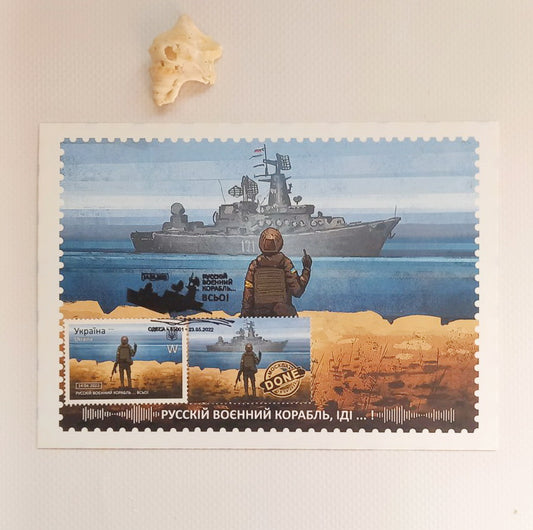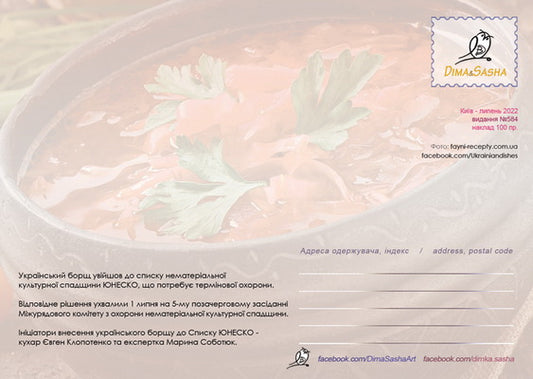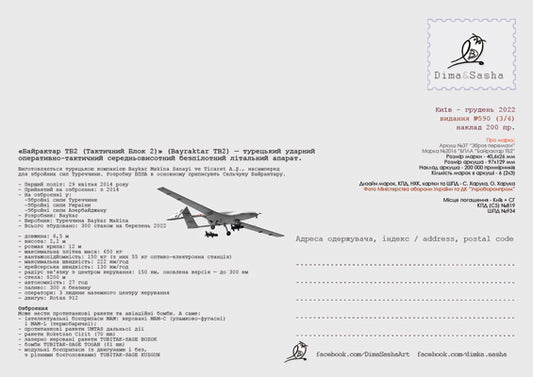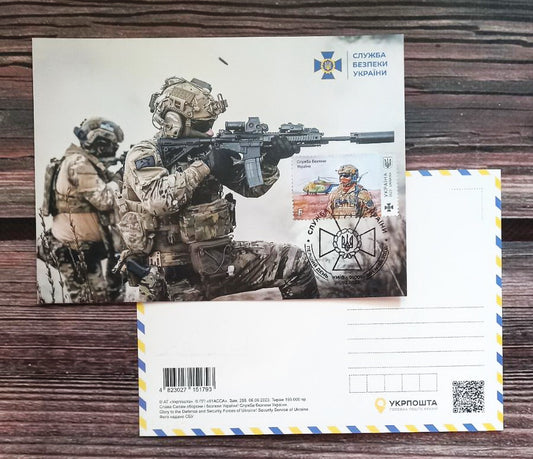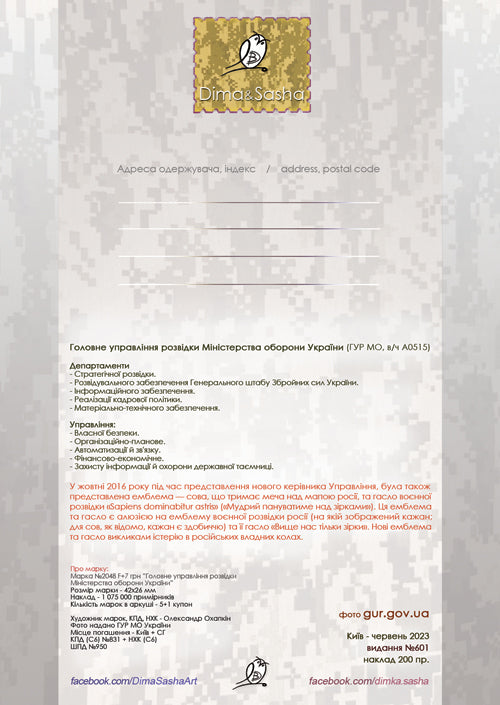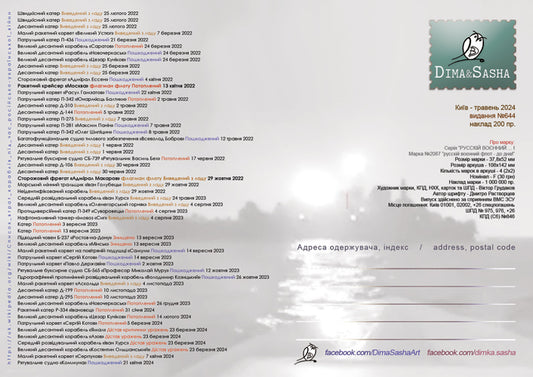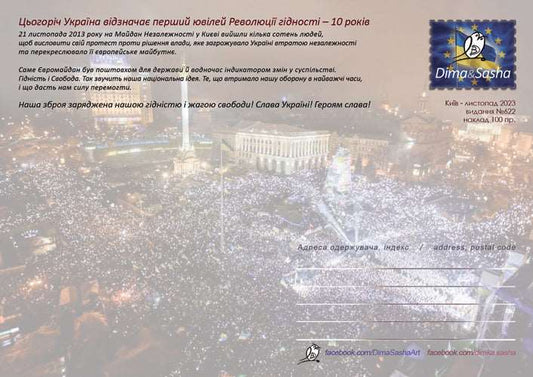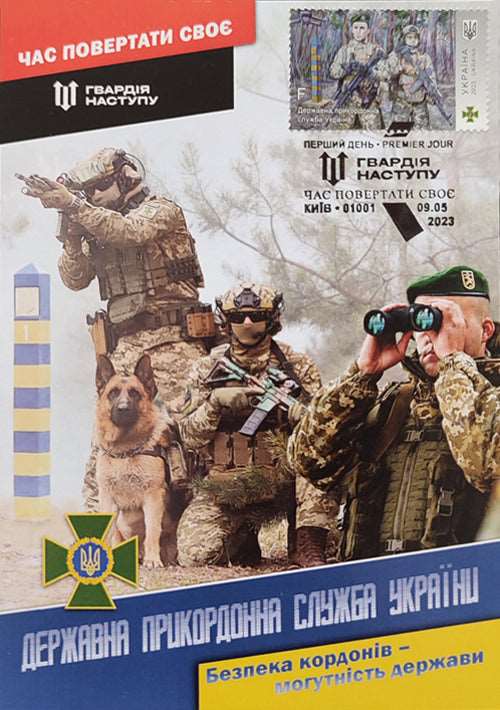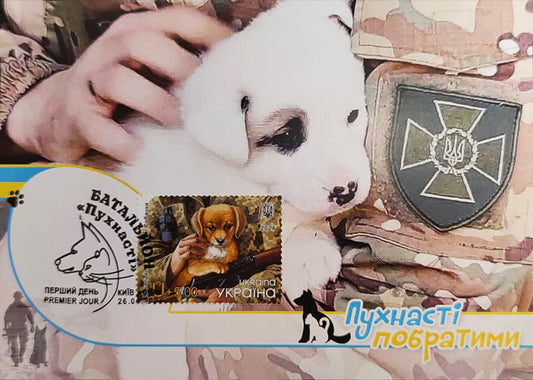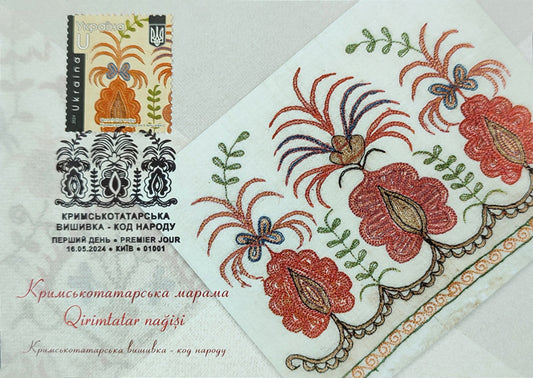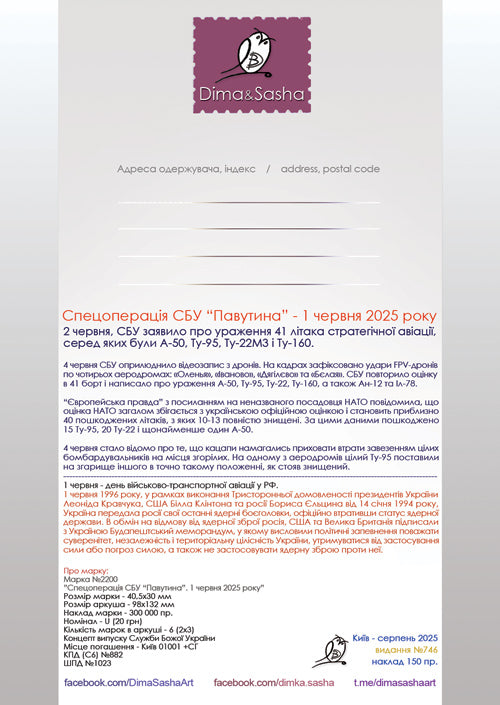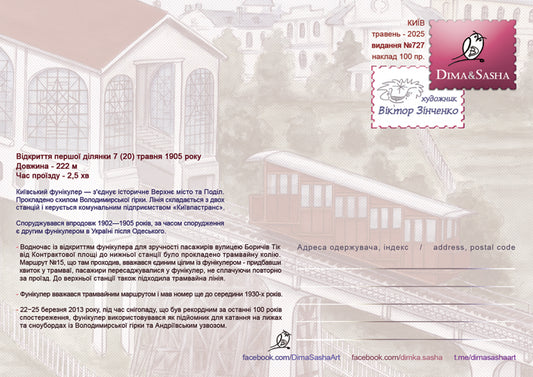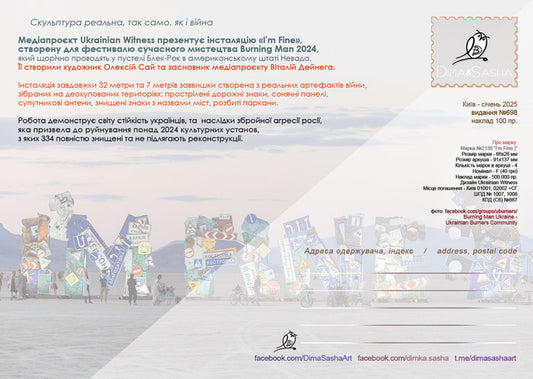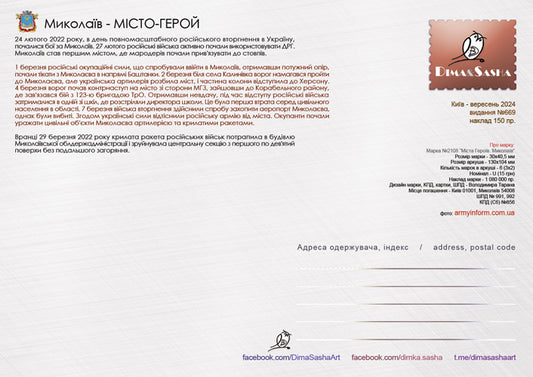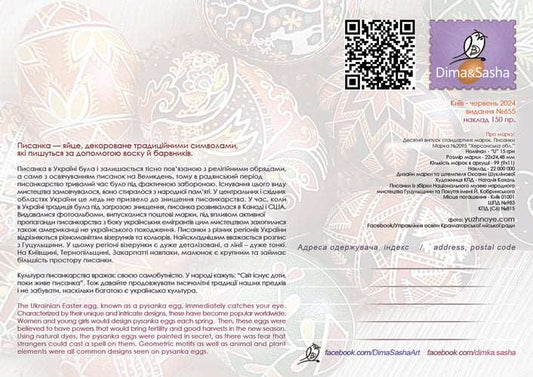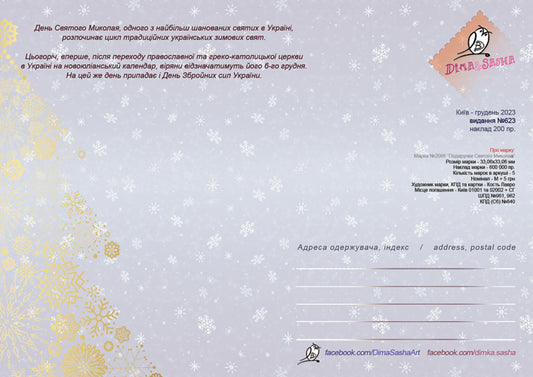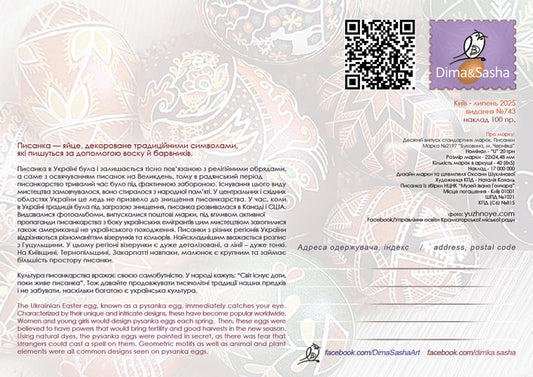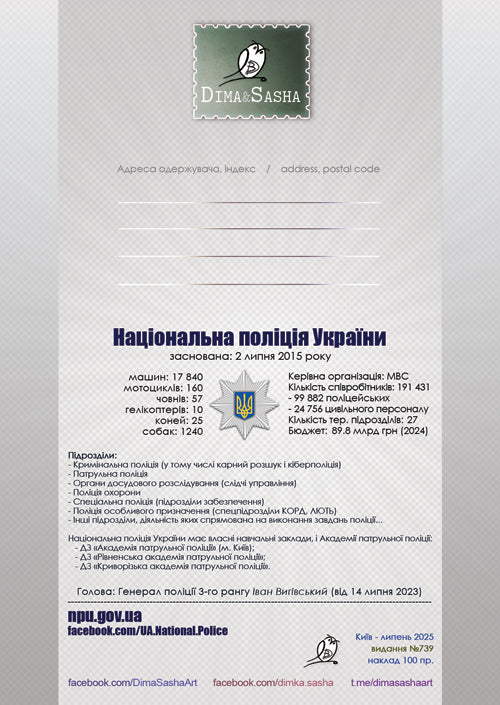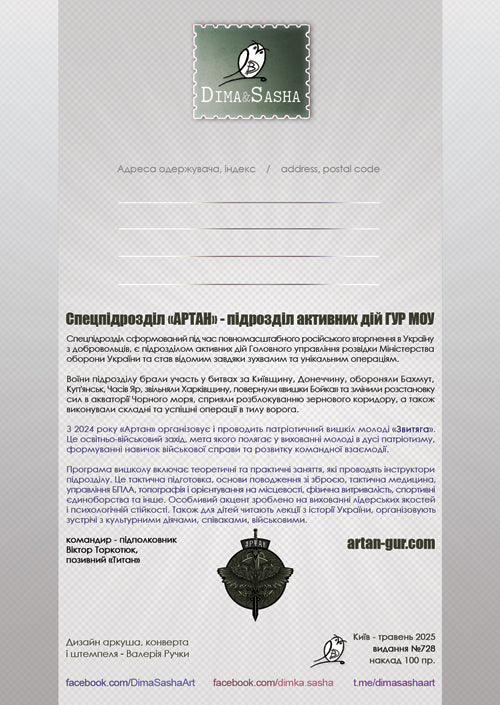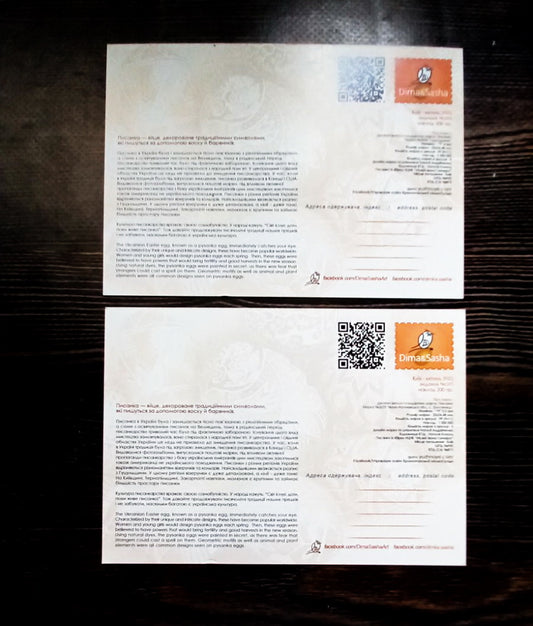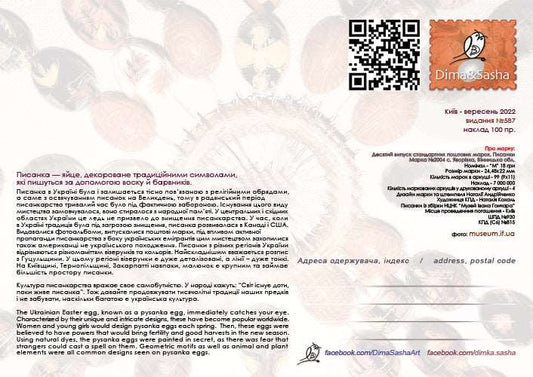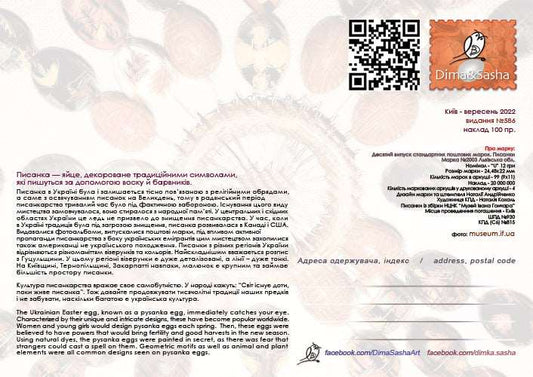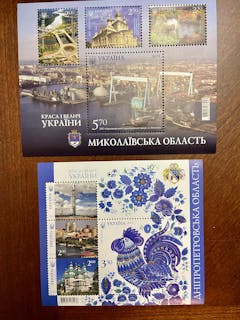Collection: Maximum Cards
-
Maximum card "Russian warship...DONE!" (set of 2 cards)
Regular price $15.00Regular priceUnit price / per -
Maximum card "Ukrainian borscht is a UNESCO Heritage Site"
Regular price $3.50Regular priceUnit price / per -
A set of 6 cardmaximums "Weapons of Victory"
Regular price $12.00Regular priceUnit price / per -
Maximum card "Crimean bridge encore!"
Regular price $4.00Regular priceUnit price / per -
Security Service of Ukraine Maximum card by Ukrposhta
Regular price $3.50Regular priceUnit price / per -
"Main Directorate of Intelligence of the Ministry of Defense of Ukraine" Maximum card
Regular price $3.00Regular priceUnit price / per -
Limited Rare Maximum card "Kherson is Ukraine!" 2022
Regular price $5.70Regular priceUnit price / per -
"Russian Navy - TO THE BOTTOM!" Maximum card
Regular price $3.50Regular priceUnit price / per -
"10 years Revolution of dignity" Maximum card
Regular price $4.40Regular priceUnit price / per -
A set of 3 cardmaximums "Glory to the Defense and Security Forces of Ukraine! Offensive Guard"
Regular price $7.00Regular priceUnit price / per -
Set of 2 "Fluffy Battalion" 2024 maximum cards
Regular price $5.50Regular priceUnit price / per$7.00Sale price $5.50Sale -
Set of 2 Cardmaximums "Ukrainian Embroidery - Nation Code" 2024
Regular price $5.99Regular priceUnit price / per -
“Special Operation Spider Web (Pavutina)” Maximum card
Regular price $4.50Regular priceUnit price / per -
Maximum card “Kyiv funicular is 120 years old” 2025
Regular price $4.00Regular priceUnit price / per -
"I`m fine" 01001. Maximum card 2025
Regular price $3.60Regular priceUnit price / per -
Mykolaiv - Hero City of Ukraine. Maximum card 2024
Regular price $3.50Regular priceUnit price / per -
"Pysanka. Kherson region" Tenth issue of standard postage stamps 2024. Maximum card
Regular price $3.00Regular priceUnit price / per -
The Armed Forces protect. Mykolay congratulates. Maximum card
Regular price $4.00Regular priceUnit price / per -
"Pysanka. Bukovina. Chernivtsi" Tenth issue of standard postage stamps 2025. Maximum card
Regular price $3.30Regular priceUnit price / per -
Cardmaximum “National Police of Ukraine. 10 years of ensuring security and protection” 2025
Regular price $3.50Regular priceUnit price / per -
Cardmaximum Active Action Unit of the Defence Intelligence of Ukraine "Artan" 2025
Regular price $3.50Regular priceUnit price / per -
Set of 2 maximum cards "Ukrainian Pysanka. Gutsulshchyna and Ivano-Frankivsk region" Tenth issue of standard postage stamps 2022.
Regular price $5.50Regular priceUnit price / per -
"Pysanka. Vinnytsia Region" Tenth issue of standard postage stamps 2022. Maximum card.
Regular price $3.00Regular priceUnit price / per -
"Pysanka. Lviv Region" Tenth issue of standard postage stamps 2022. Maximum card.
Regular price $3.00Regular priceUnit price / per


